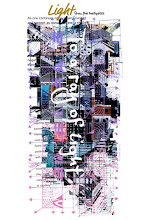While straw bale walls are approximately 50cm thick and cob walls around 60cm thick, a method seen in traditional Japanese homes involves applying soil to bamboo lattices for thinner internal walls.
The following values represent thermal conductivity, where lower numbers indicate higher insulation performance. Straw has a high insulation performance.
- Glass wool: about 0.016 W/(m·K)
- Straw: approximately 0.05 - 0.09 W/(m·K)
- Earth walls: approximately 0.5 - 0.8 W/(m·K)
- Natural wood: about 0.1 - 0.2 W/(m·K)
- Concrete: roughly 1.7 - 2.3 W/(m·K)
In addition to straw, grasses such as cogongrass and hay can also be used. The thermal conductivity of cogongrass is 0.041 W/(m K), while that of hay from lawn grass is 0.037 W/(m K). There are various types of grasses, including cogongrass, sedge, miscanthus, reed, kariyasu, karkaya, and shimakaya, known in Japan for their use in thatched roofs.
In essence, straw is a renewable resource available for harvesting worldwide annually. By managing the amount of materials available for local governments to use, the risk of resource depletion can be mitigated. However, since soil takes hundreds of years to form, materials like bamboo and straw, which can be harvested in shorter periods, become more prioritized. Thus, the use of soil in straw bale houses, which still has lower quantities, takes precedence over cob houses.
Bamboo primarily thrives in warm, humid regions such as Eastern and Southern Asia, Africa, and countries near the equator in South America. In places where bamboo isn't prevalent, wood becomes the alternative, with local authorities making decisions while monitoring the quantity of trees. If the use of straw bale houses exhausts the wood resources needed for residential construction, cob houses become a viable alternative.
These dwellings employ reusable materials, emphasizing long-term use through repeated repairs and natural disposability post-use. Straw bale, cob, and adobe constructions are ancient techniques found across continents and are highly adaptable as fundamental sustainable housing methods worldwide.






0 コメント